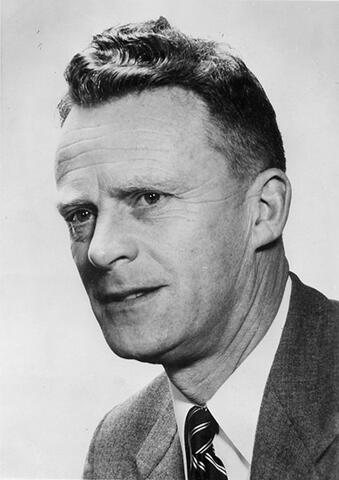
Zone du titre et de la mention de responsabilité
Titre propre
Arthur J. Porter - Portrait
Dénomination générale des documents
- Document graphique
Titre parallèle
Compléments du titre
Mentions de responsabilité du titre
Notes du titre
Niveau de description
Pièce
Cote
Zone de l'édition
Mention d'édition
Mentions de responsabilité relatives à l'édition
Zone des précisions relatives à la catégorie de documents
Mention d'échelle (cartographique)
Mention de projection (cartographique)
Mention des coordonnées (cartographiques)
Mention d'échelle (architecturale)
Juridiction responsable et dénomination (philatélique)
Zone des dates de production
Date(s)
-
[1960] (Production)
Zone de description matérielle
Description matérielle
1 photograph : b&w-drymounted ; 11 x 8 cm
1 negative : b&w ; 12.5 x 10 cm
Zone de la collection
Titre propre de la collection
Titres parallèles de la collection
Compléments du titre de la collection
Mention de responsabilité relative à la collection
Numérotation à l'intérieur de la collection
Note sur la collection
Zone de la description archivistique
Nom du producteur
Historique de la conservation
Portée et contenu
Head and shoulders portrait of Arthur J. Porter, dean of Engineering.
Bio/Historical Note: Arthur J. Porter was born in 1910 in Ulverston, England. While studying at the University of Manchester, Porter helped build a differential analyzer - one of the world’s first analog computers, using a Mecanno construction set. In 1937 he accepted a fellowship at the Massachusetts Institute of Technology (MIT). Porter helped build the Rockefeller differential analyser - the most ambitious analog/digital computer built to date. It was used extensively for projects during World War II. In 1949 Porter accepted a position with Ferranti Canada and worked on the DATAR system. DATAR combined data from a convoy of ships’ sensors, providing a single ‘overall view’ that allowed the commander to make better-informed decisions. Soon afterwards, in the early 1950s, Porter was one of six Canadians selected to work on Project Lamp Light; working on data processing expertise was crucial to this top-secret North American air defence initiative. In 1958 Porter became the fourth dean of Engineering at the University of Saskatchewan. There, along with Norman Moody and Dr. William Feindel, Porter established Canada’s first biomedical research program. In 1962 Porter moved to the University of Toronto to chair their new Industrial engineering department - one of the first in the world. While there, Porter also helped establish the University’s biomedical program. During the late 1960s he was involved in projects that bridged the gap between culture and science. He was the first acting director of the University of Toronto’s Centre for Culture and Technology. Porter also chaired the Science and Technology Advisory Committee when Montreal hosted the World’s Fair-Expo 67. Porter died in 2010 in Winston-Salem, North Carolina at age 99.
Zone des notes
État de conservation
Source immédiate d'acquisition
Classement
Langue des documents
Écriture des documents
Localisation des originaux
Disponibilité d'autres formats
Restrictions d'accès
There are no restrictions on access.
Délais d'utilisation, de reproduction et de publication
Photographer: Gibson
Copyright holder: University of Saskatchewan
Other terms: Responsibility regarding questions of copyright that may arise in the use of any images is assumed by the researcher.
Instruments de recherche
Éléments associés
Accruals
Location note
Vol. 82 / Neg. Vol. 13
Identifiant(s) alternatif(s)
Zone du numéro normalisé
Numéro normalisé
Mots-clés
Mots-clés - Sujets
Mots-clés - Lieux
Mots-clés - Noms
- Gibson Photo ()

